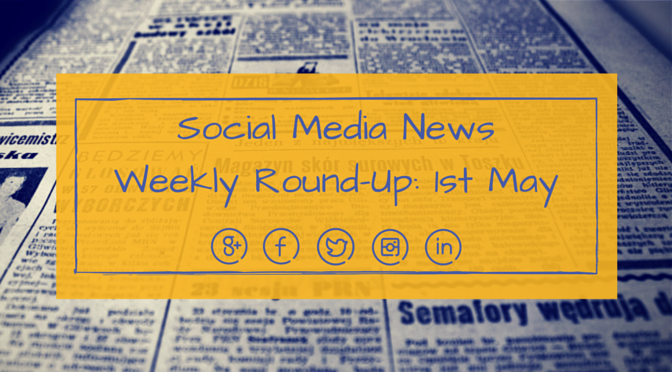
We’ve got news from Instagram, Pinterest and Twitter this week, with updates on the developments and changes each site is making in order to make way for innovative and creative uses of the site. The changes are also opening up opportunities for businesses to get creative with their marketing and collaborate with the sites. Think your business could utilise the developments? Take a look…
Instagram – #FreeTheEggplant
Instagram announced on Wednesday that users are now able to hashtag emojis and turn them into searchable terms, both as clickable links in photo captions and within the Instagram ‘Explore’ section. Seemingly good news all round, unless, that is, you wanted to use the aubergine emoji.
Without any delay, Instagram have disabled the aubergine emoji from the hashtag functioning, and you may already know why. The seemingly innocent aubergine emoji has developed a reputation on social media over the past couple of years for the indication of sexual content (weird, we know). Therefore, the humble aubergine hashtag has been axed for the greater good of preventing users from creating searchable shortcuts to explicit sexual content faster than Instagram can block them.
Soon after the announcement, outraged defenders of the emoji in America began the #FreeTheEggplant campaign on Twitter and Instagram with hopes of reinstating the vegetable.
What’s up for debate is whether this block will work in the long term, or whether the amount of blacklisted emojis will increase as users adopt other emojis for this purpose (banana and corn on the cob, we’re looking at you….).

Twitter users are worried that the control they have over what they see on their Twitter feed is being compromised by these changes.
Next up, Twitter have announced this week that they intend to push forward with their plans to curate the ‘experiences’ of individual users when they log in to the site. Whilst trying to drive forwards past slumping sign-up figures, this announcement has alarmed some users, who have compared it to the algorithm currently used by Facebook to determine which particular posts each user sees in their newsfeed.
Twitter have stopped short of saying that they plan to get rid of the current unfiltered, reverse-chronological order set-up of their newsfeed, but have insisted that they want to boost the visibility of key moments and events on the site and make them available to every user. The immediacy of updates on Twitter is one of its key selling points, and so inserting moments into the timeline, which would interrupt its chronology, would need to be done carefully. As it stands, Twitter already offer a ‘While You Were Away’ feature within their app, which offers users an easily dismissible ‘highlights’ section from their feed.
Curating the newsfeed may be good news for businesses that invest in advertising on Twitter, as the boosted flexibility of the site paves the way for increased advertising possibilities. Individual users on the other hand, may need to be reassured that they aren’t having their control of the newsfeed compromised.
 Pinterest
Pinterest
The co-founder of Pinterest, Evan Sharp, has been speaking at the Bloomberg Business Week Design Conference about how he envisages the future of Pinterest and their collaborations with businesses. Pinterest are hoping to bridge the gap between a scrapbook of ideas on the site and real life experiences.
Sharp used an example of the deal that Pinterest currently has with Apple, in which a user can click through to the App Store and purchase an app if they find the app on a Pinterest board. If Pinterest follows this model and expands it to other businesses, the sheer variety of content on Pinterest means that the developments could be exponential. Pinned singers and bands could become links to ticket websites, meal plans and recipe pins could become links to cooking classes, and those ‘Dream Destination’ boards could be turned into a travel itineraries with options to buy plane tickets and book hotels.
This idea seems to combat the cliché that a user may spend an hour of their time pinning organisational and tidying ‘hacks’ that could have been spent actually cleaning and tidying their home. It’s still early days for this development, but it seems to point towards a productive way of converting stale scrapbooking into action and activity.
#RoyalBabyWatch
Lastly, it’s been confirmed this week that for the first time the birth of the Royal Baby will be immediately confirmed via the palace’s social media sites, including @KensingtonRoyal Twitter feed. The tweet will only reveal the weight, sex and time of birth of the new arrival, but it reflects the monarchy’s continuing pursuit of engagement with modern forms of communication, since the Queen sent out her first official tweet via the @BritishMonarchy in October last year. For the enraged traditionalists out there, fear not – the same easel that confirmed the arrival of Prince George will be displayed outside Buckingham Palace for this arrival too.
By Olivia Rose French
Olivia is an expert writer, blogging specialist and Copywriter at Shake Social.
Struggling to maintain your own blog? We can help!